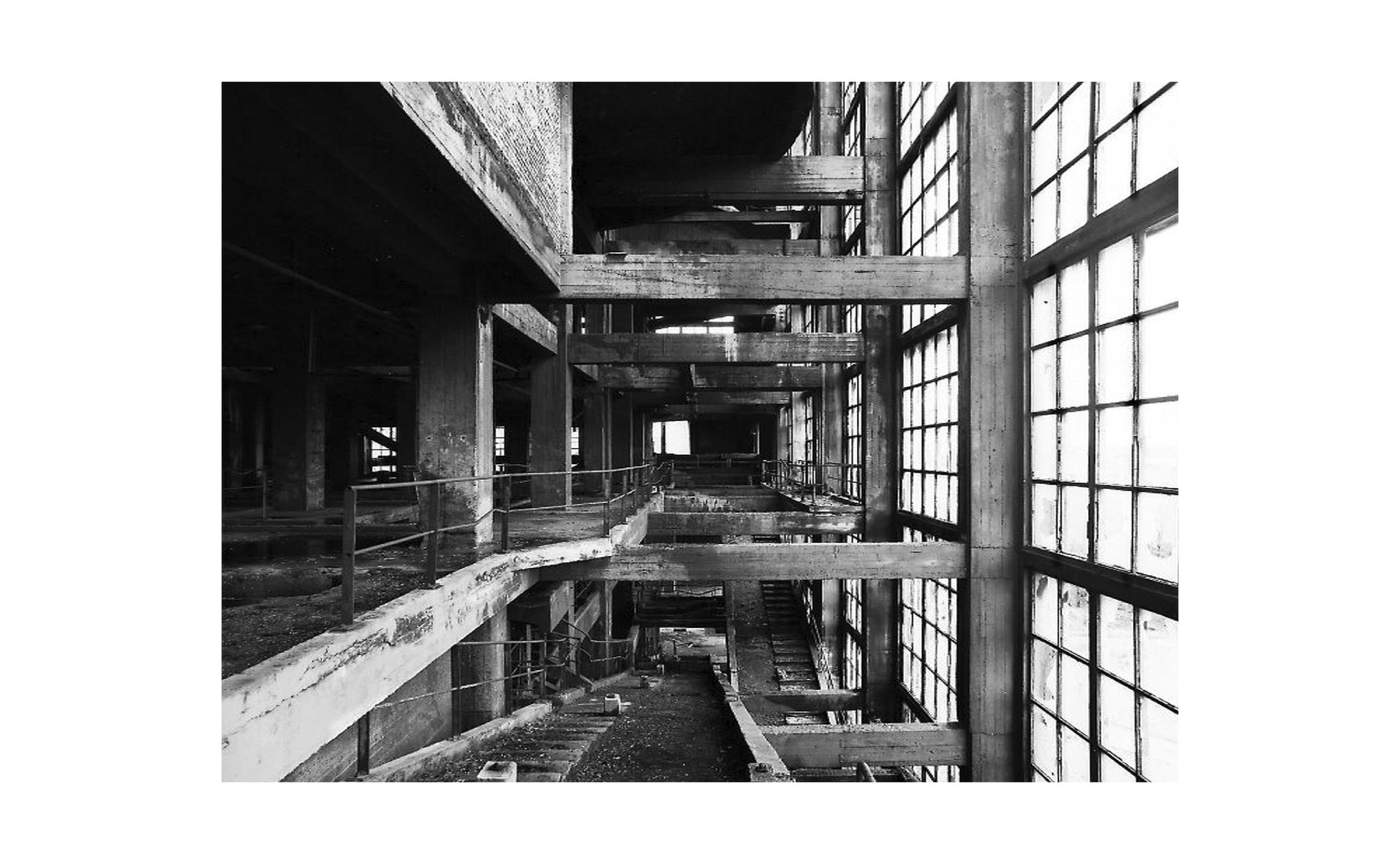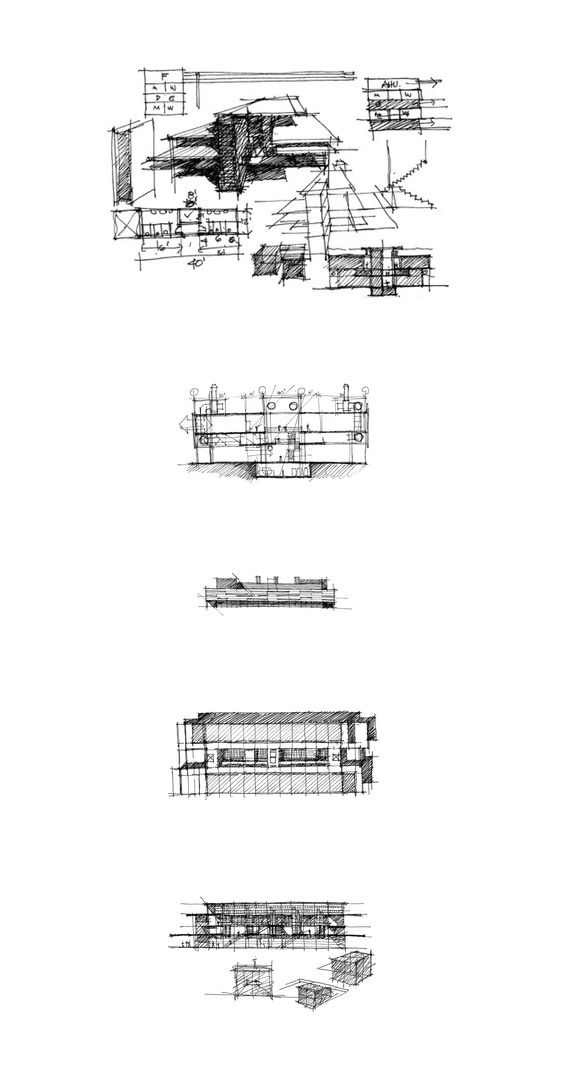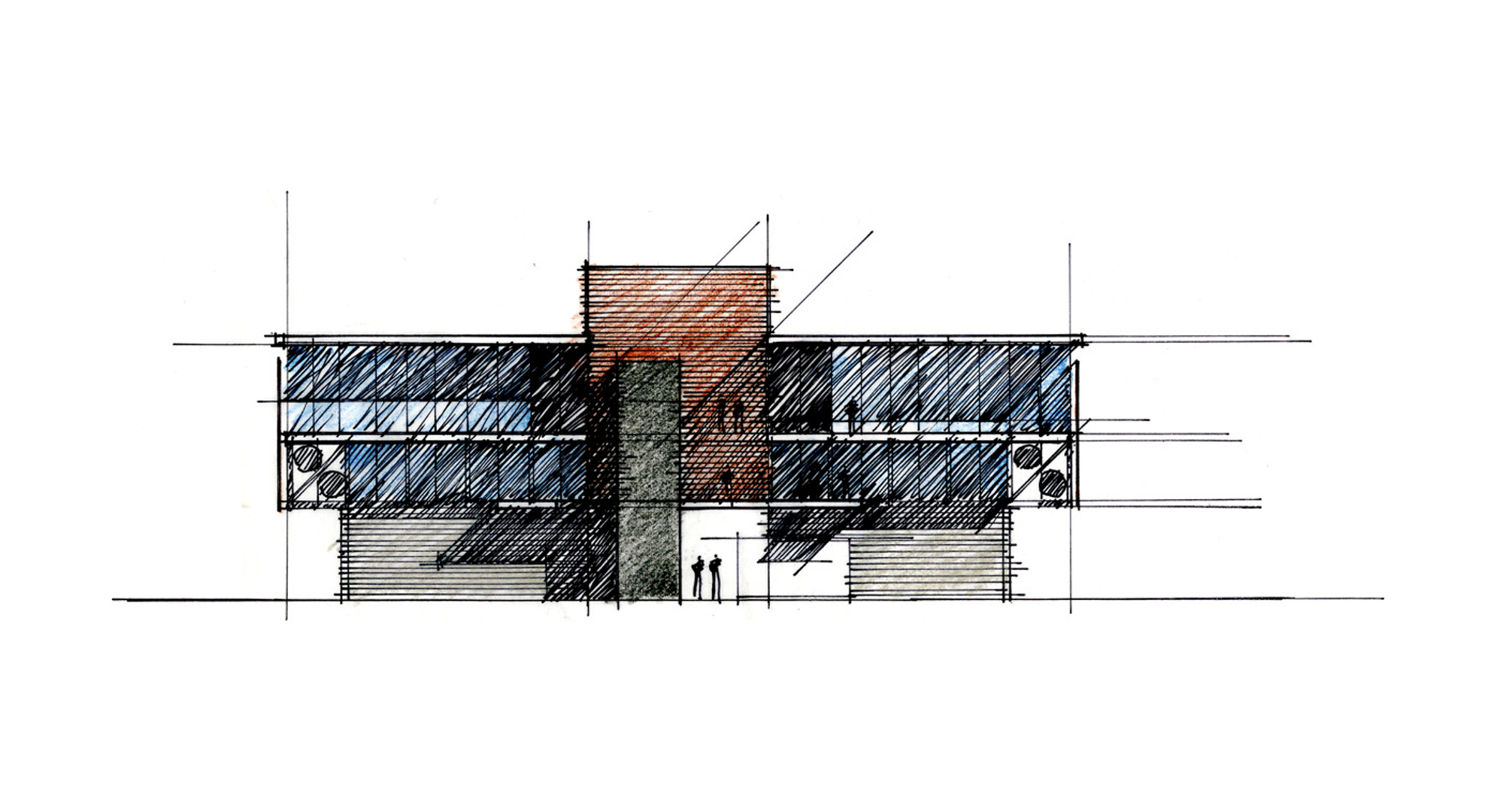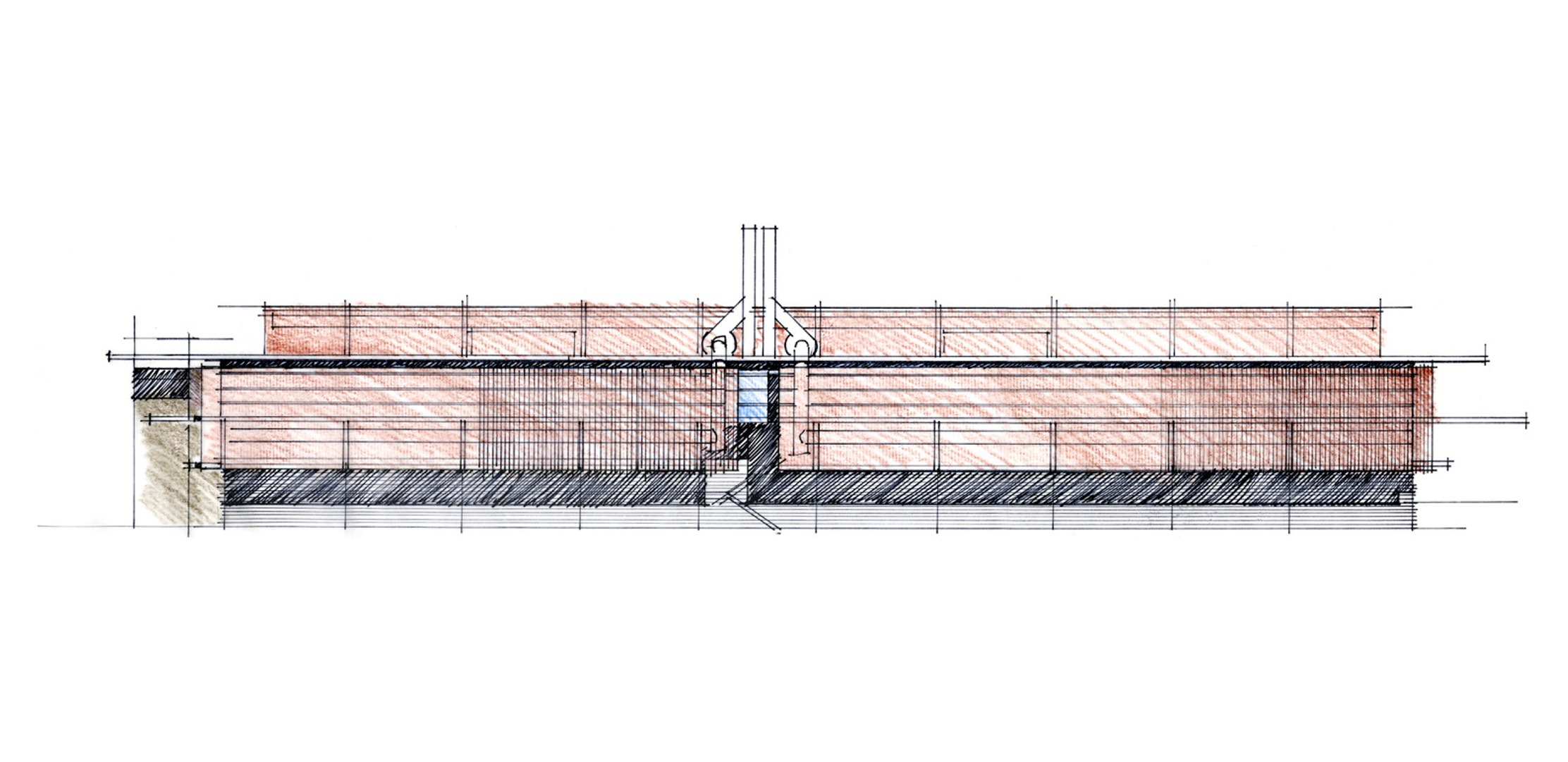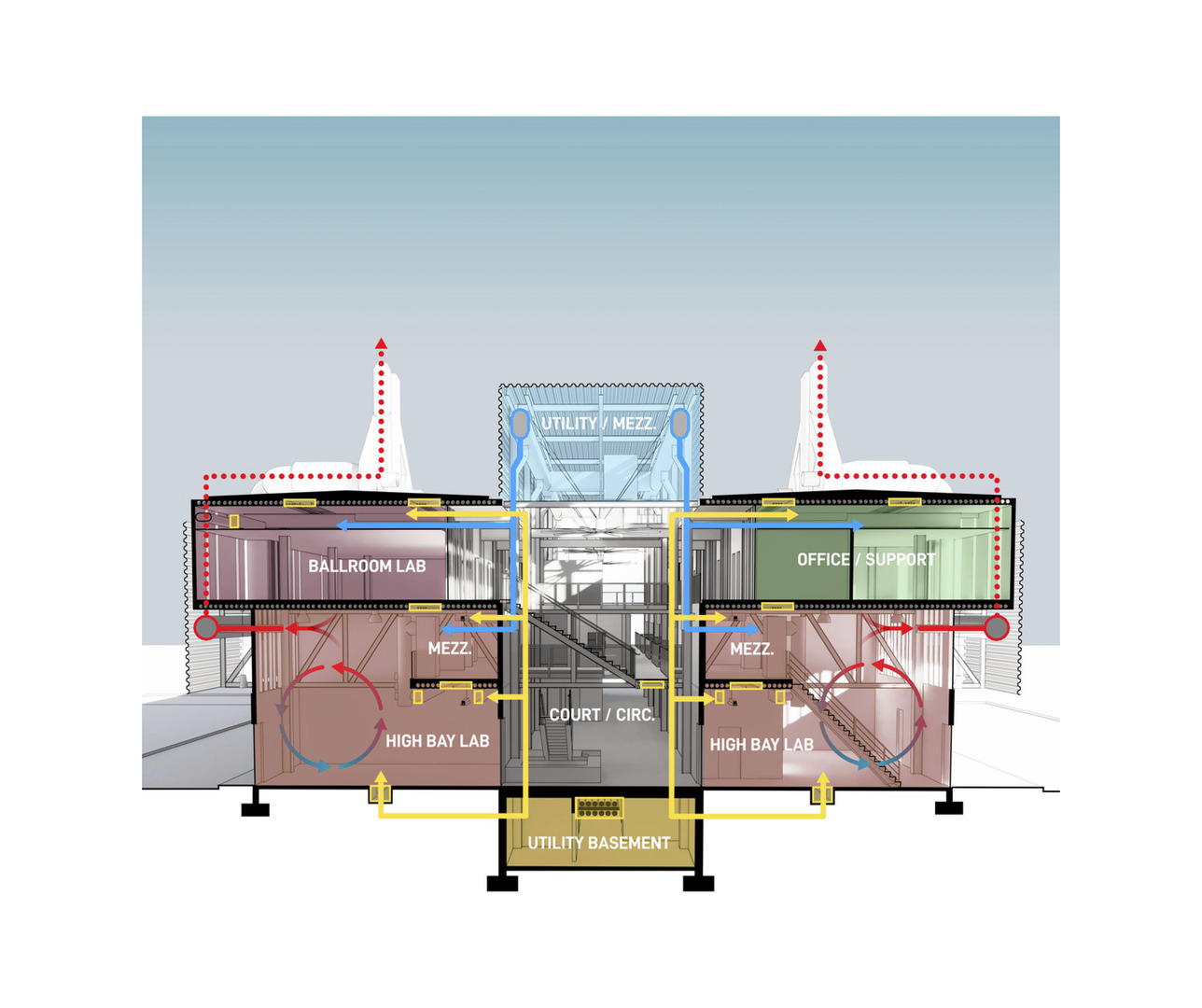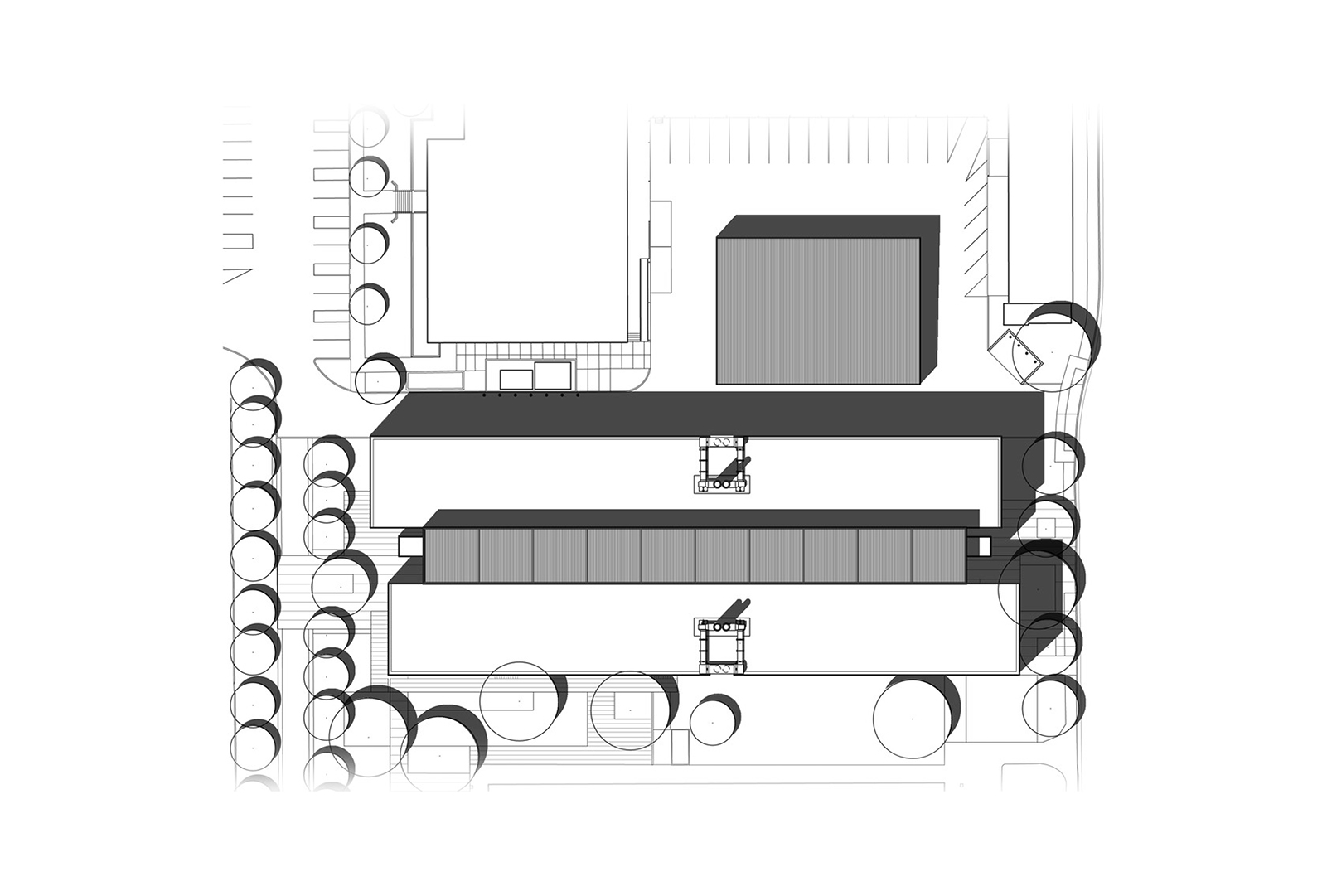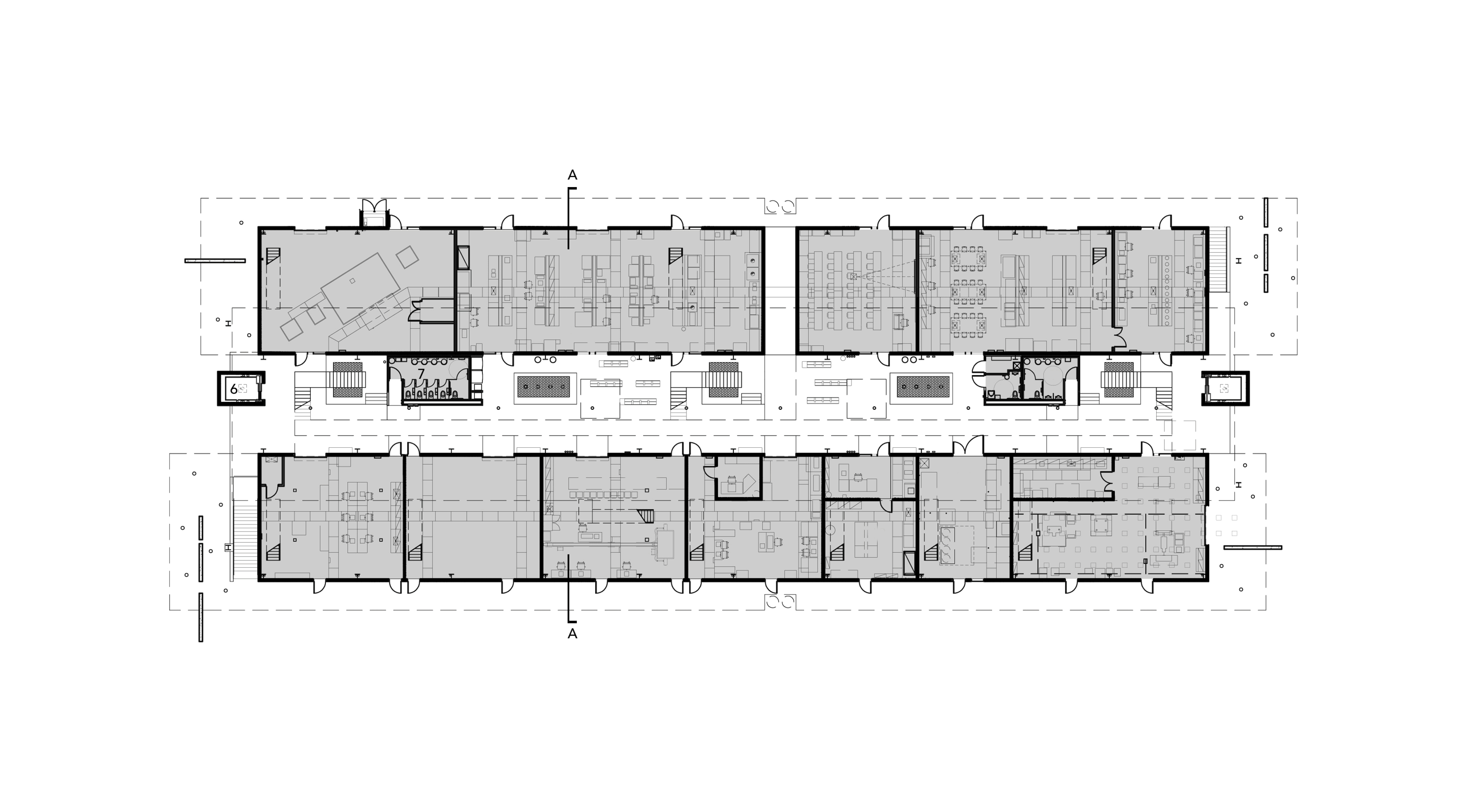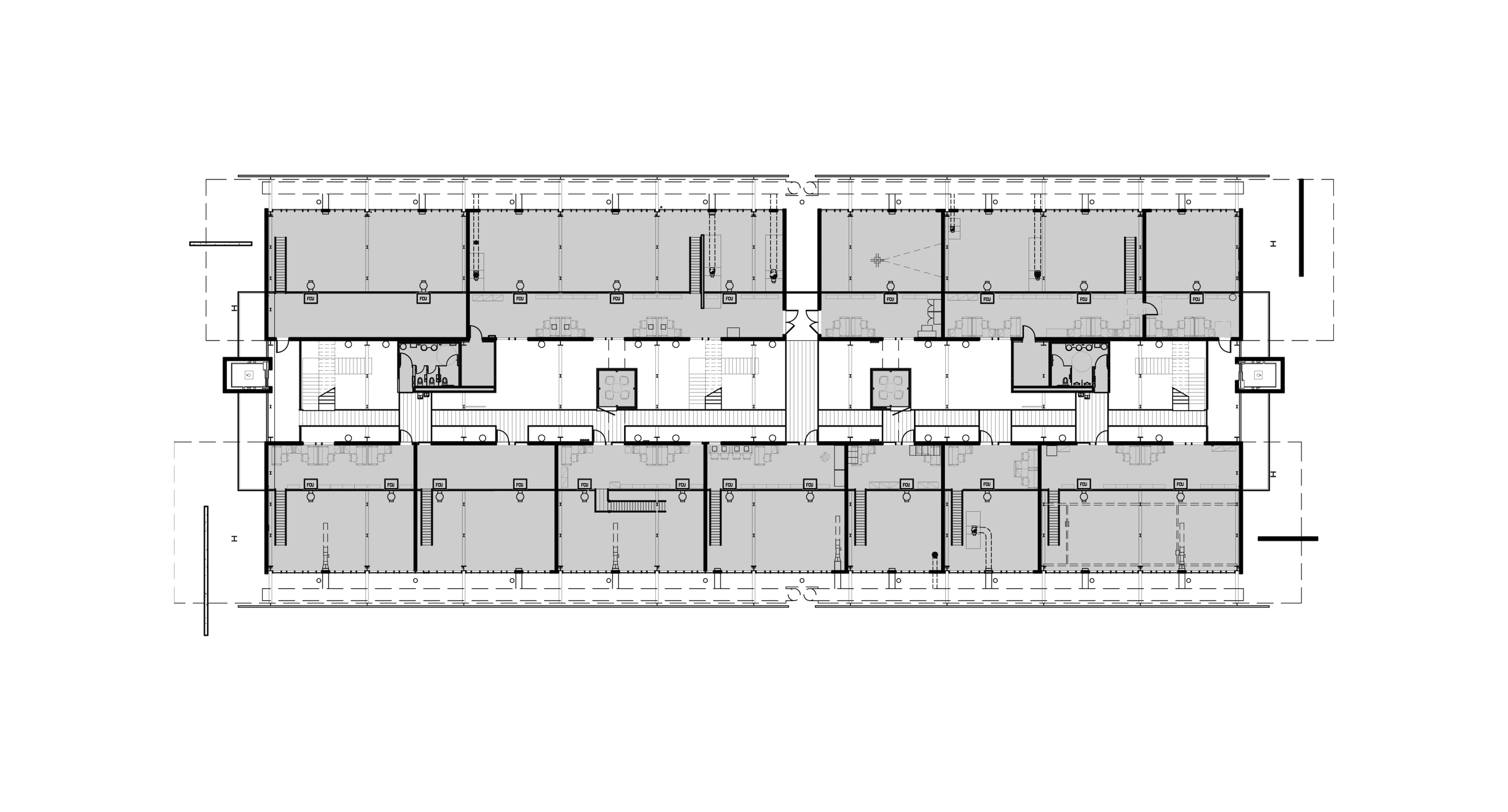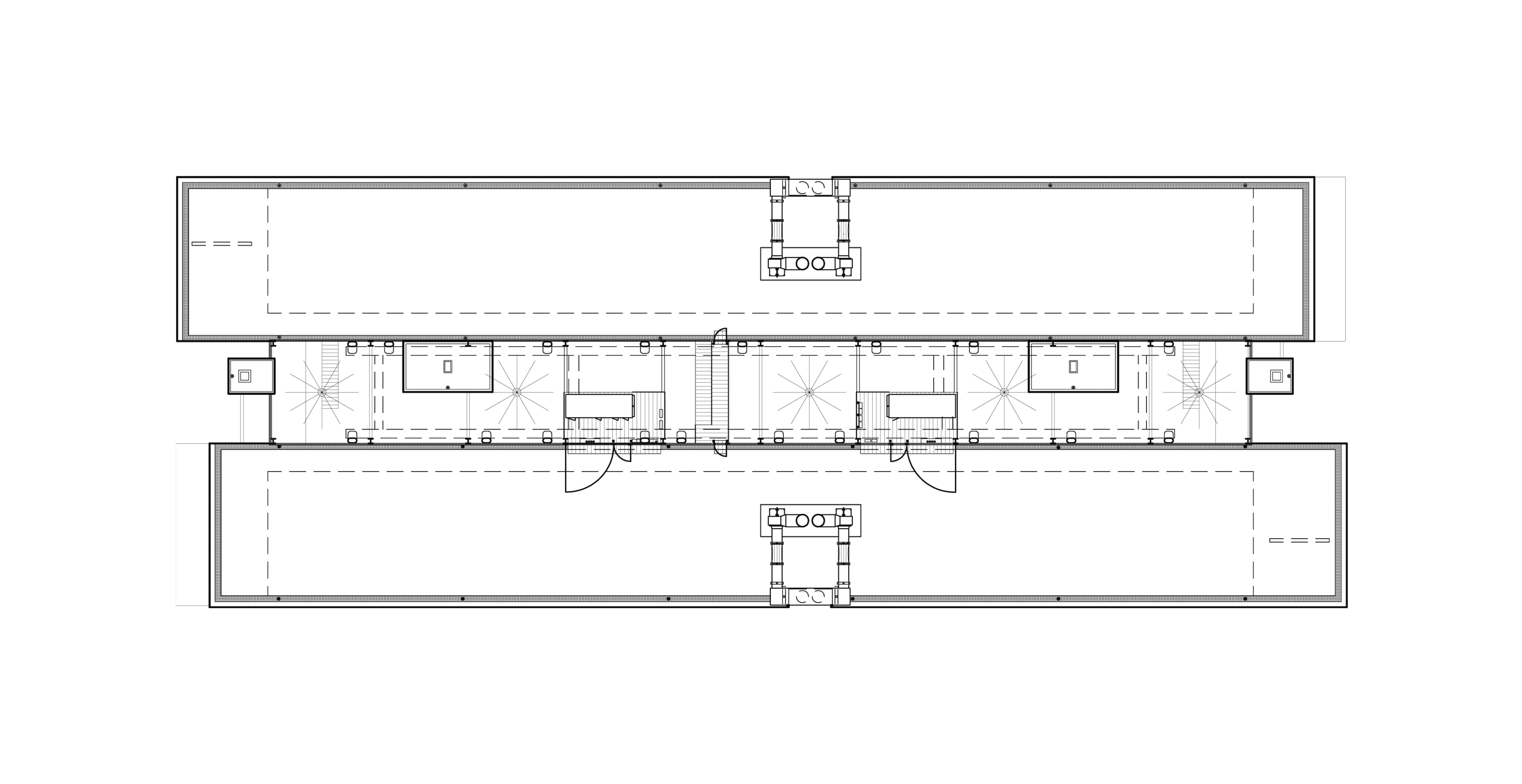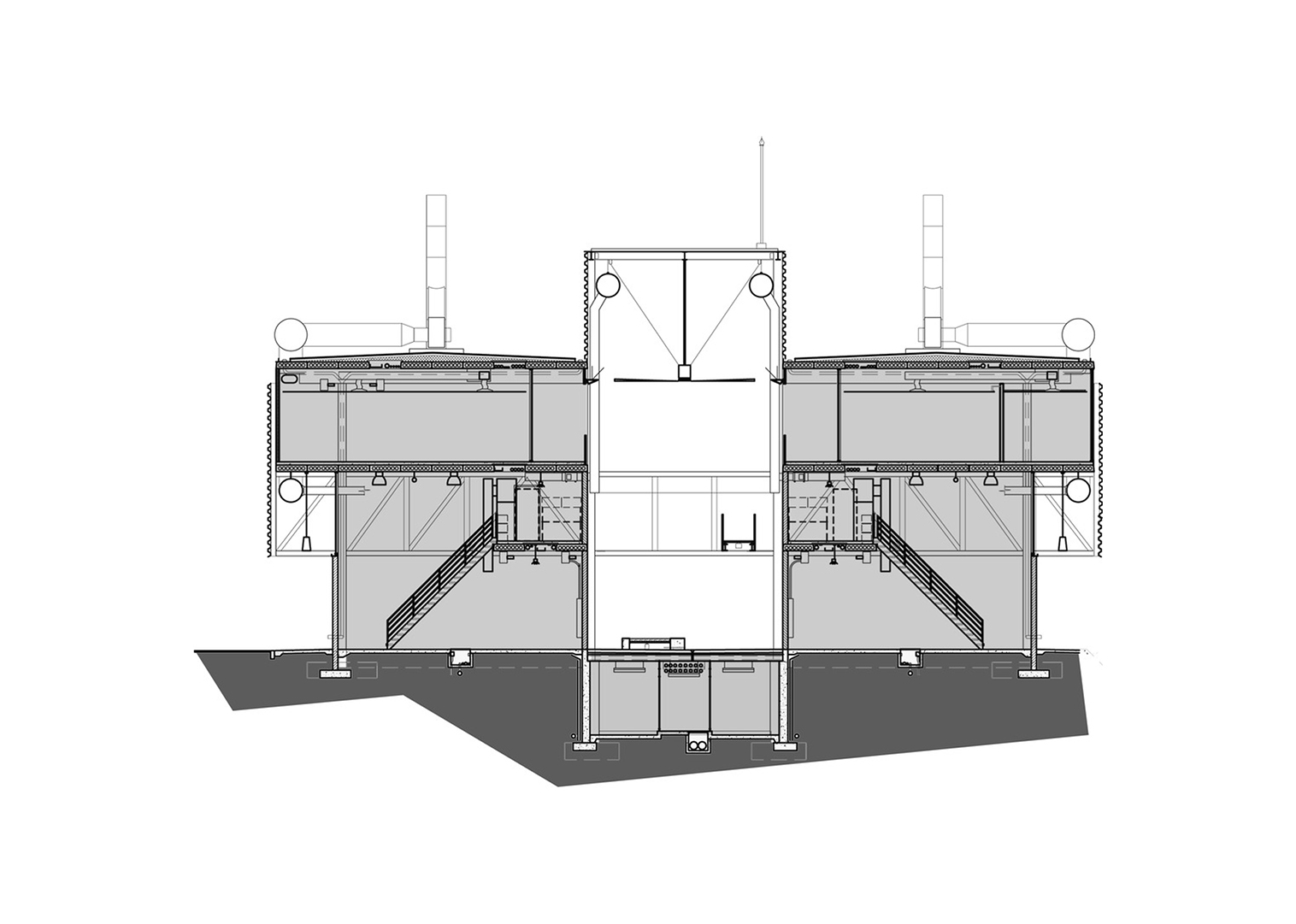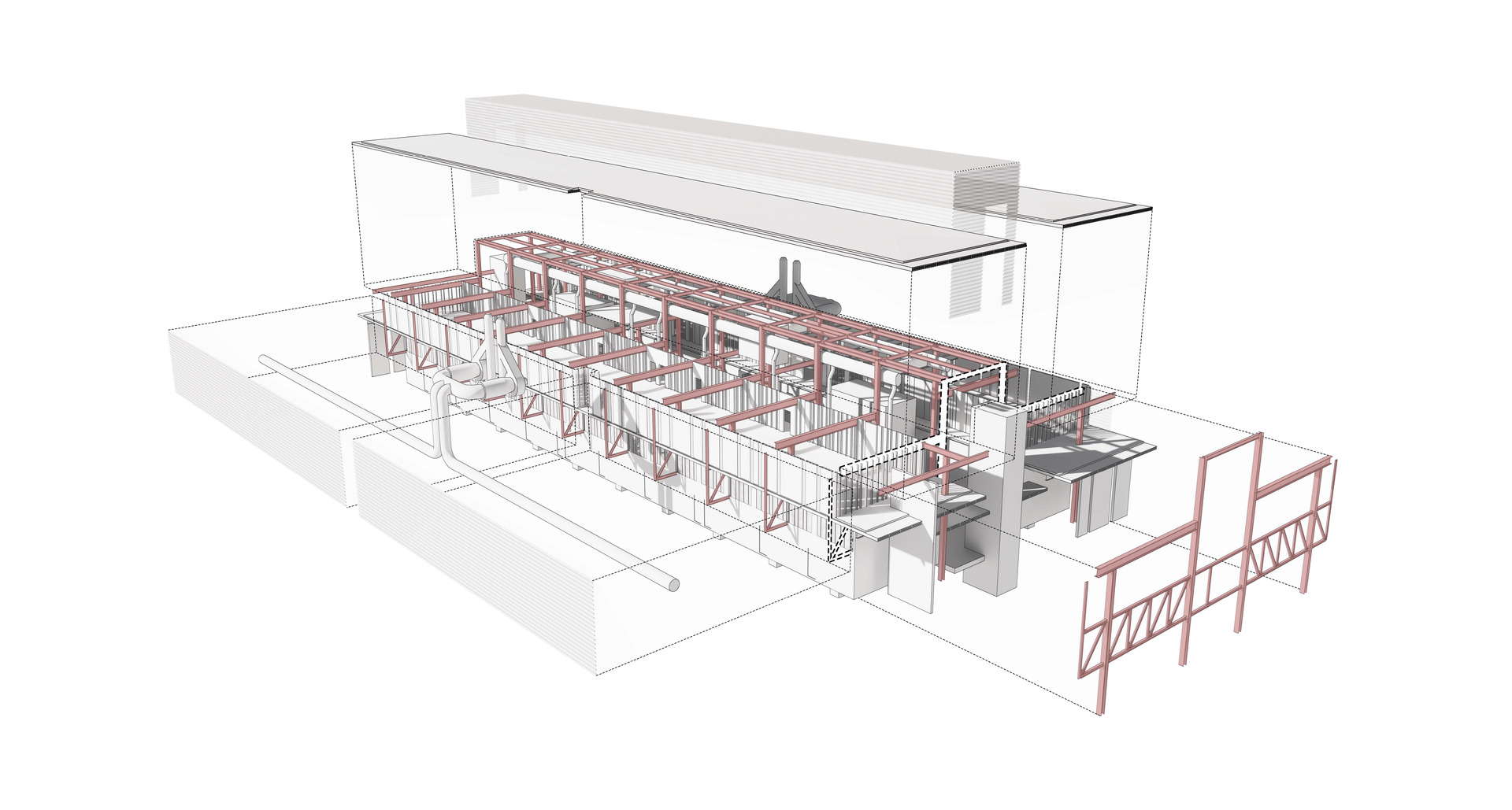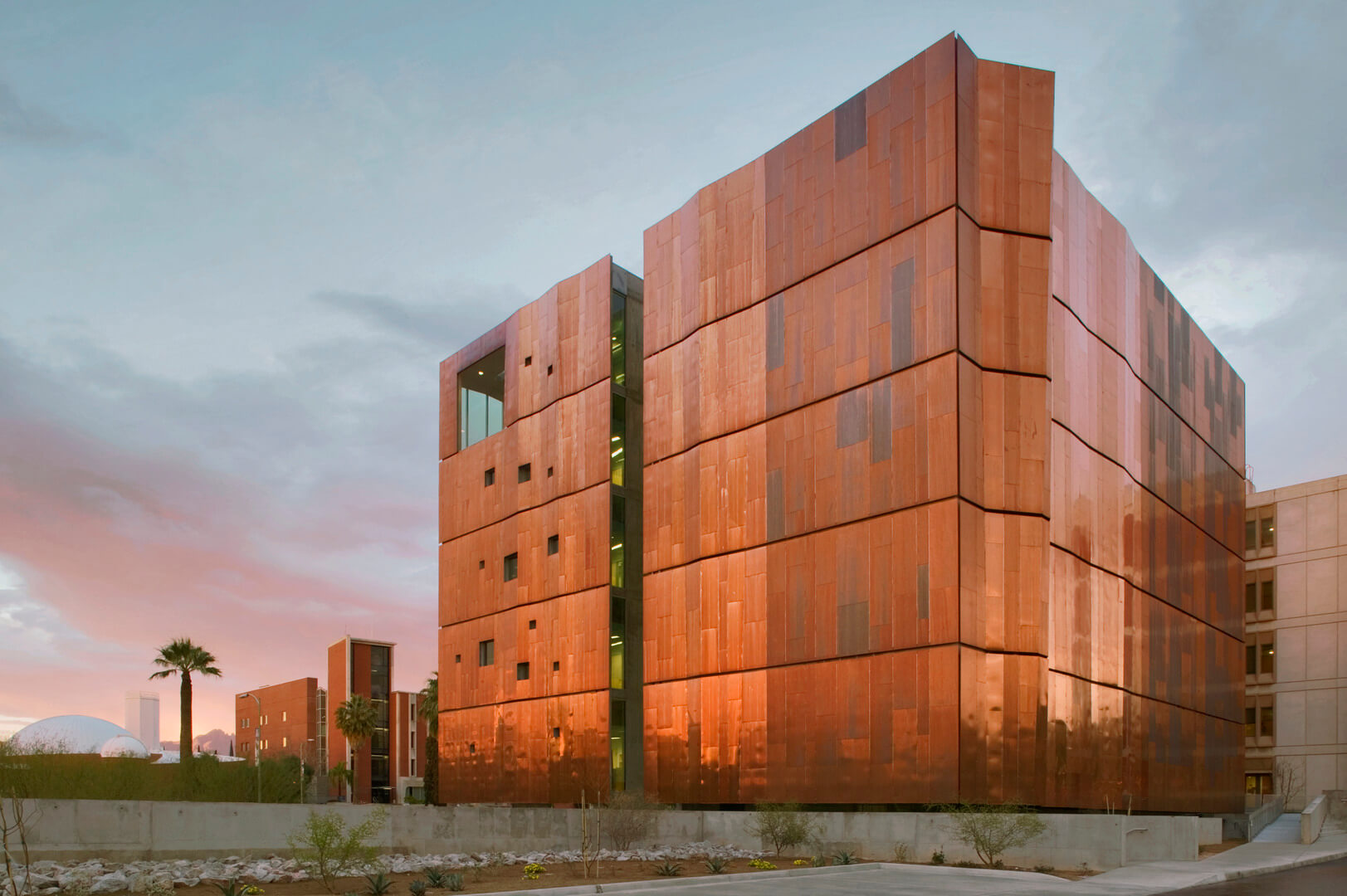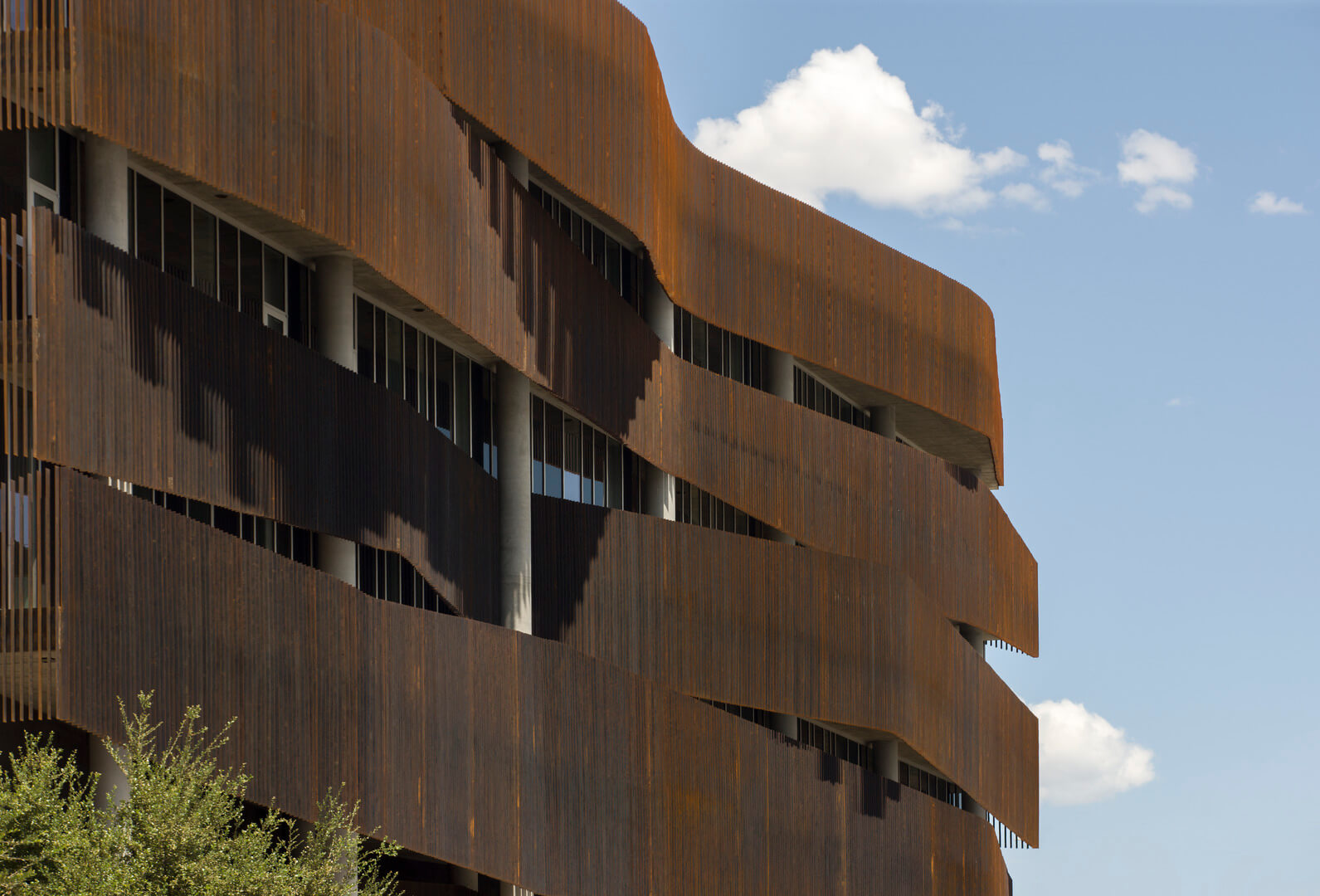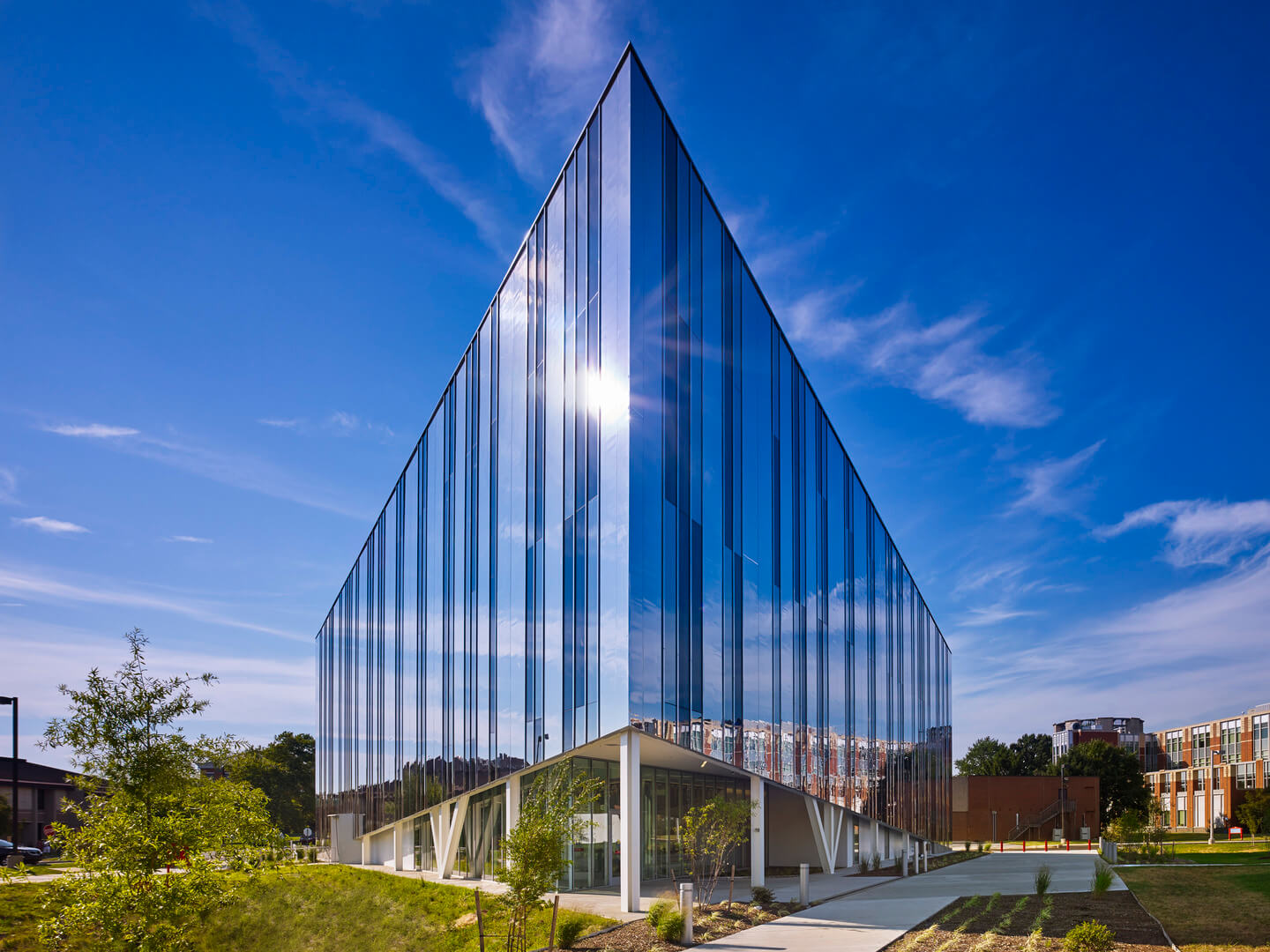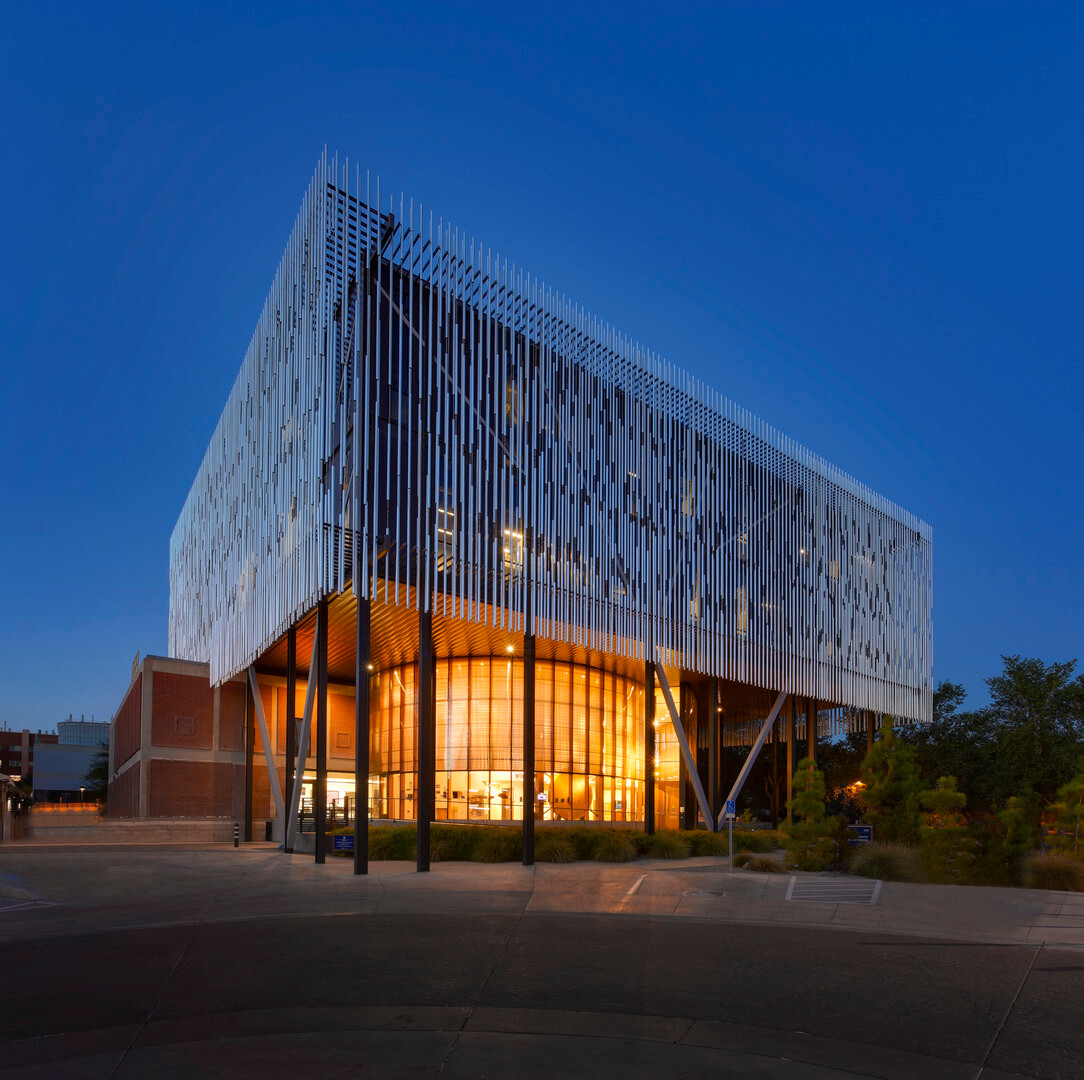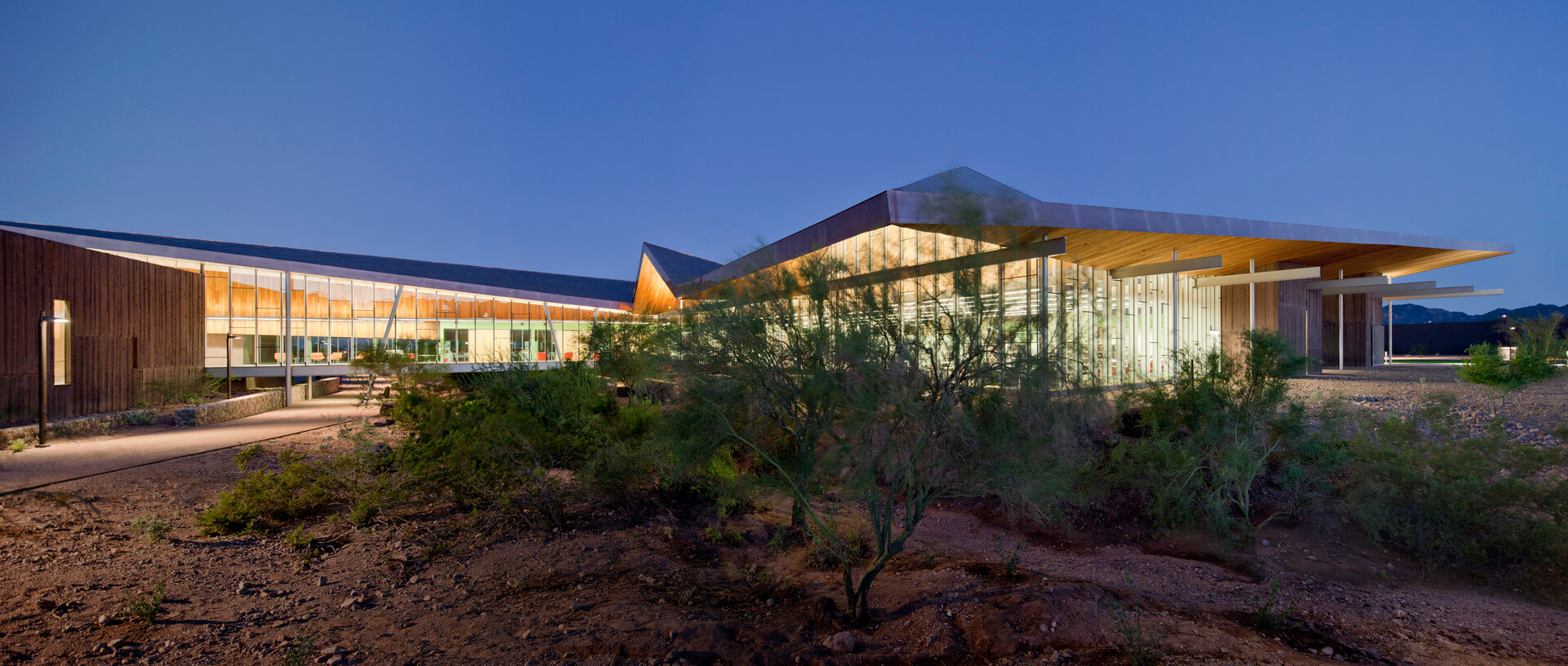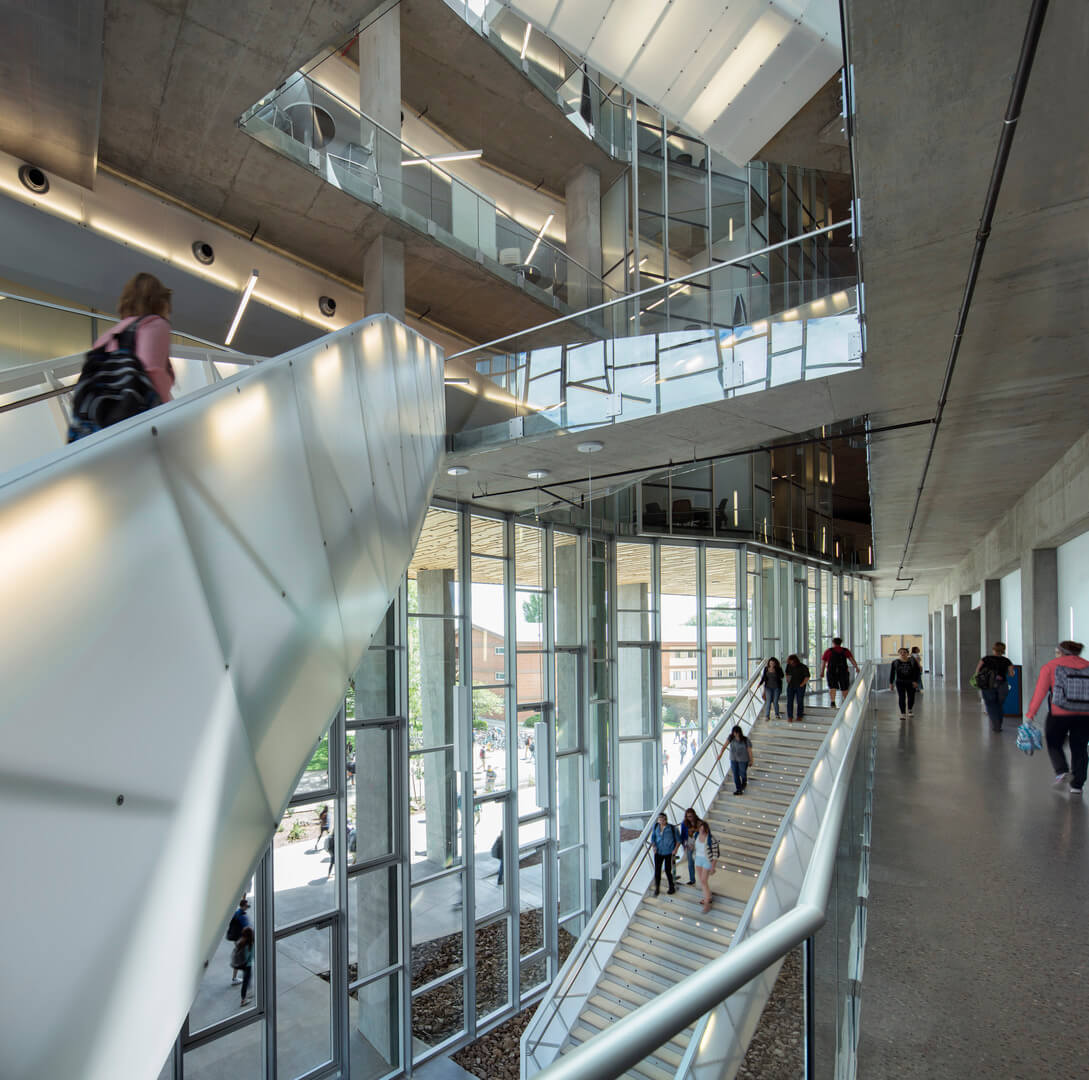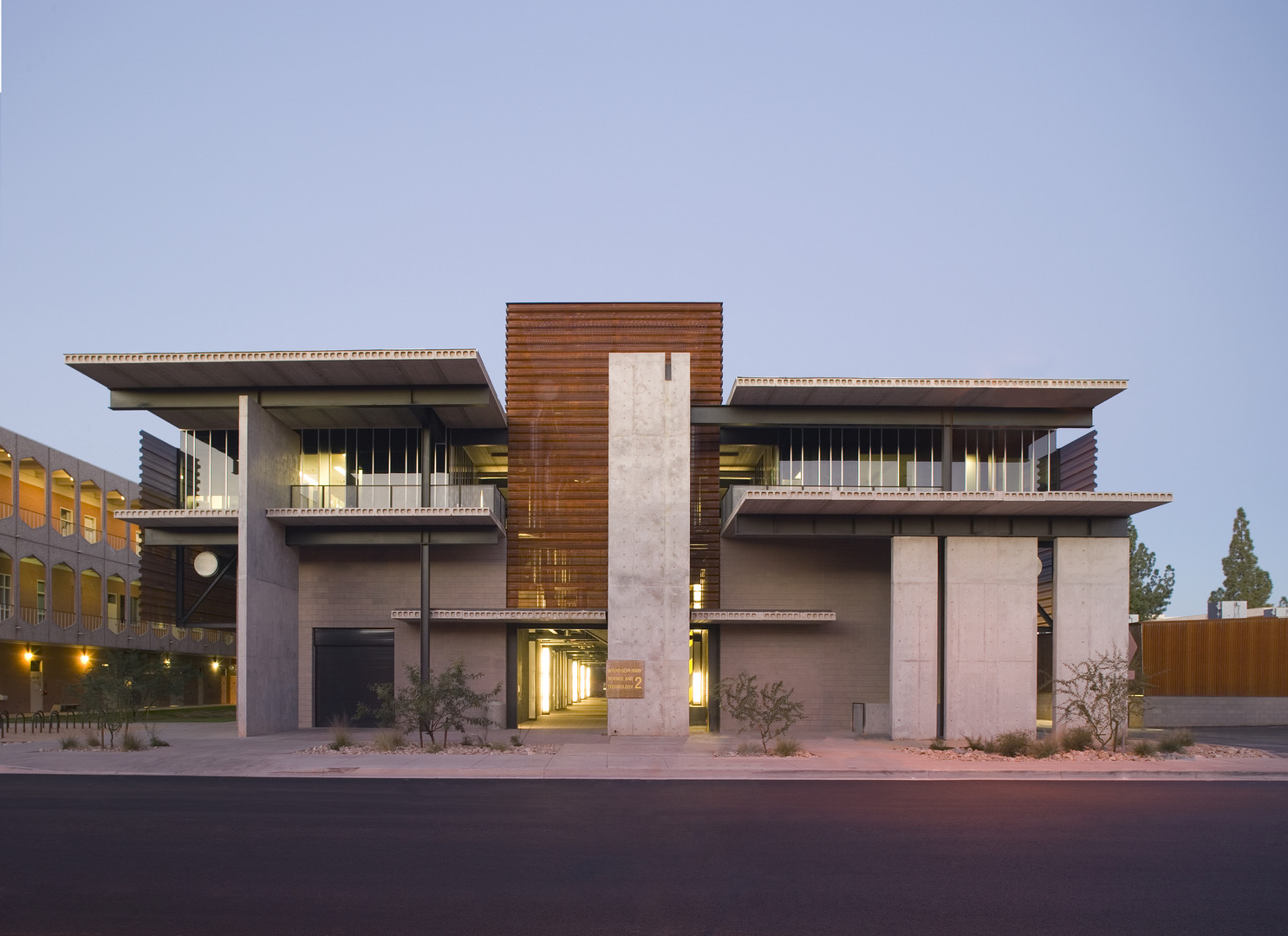
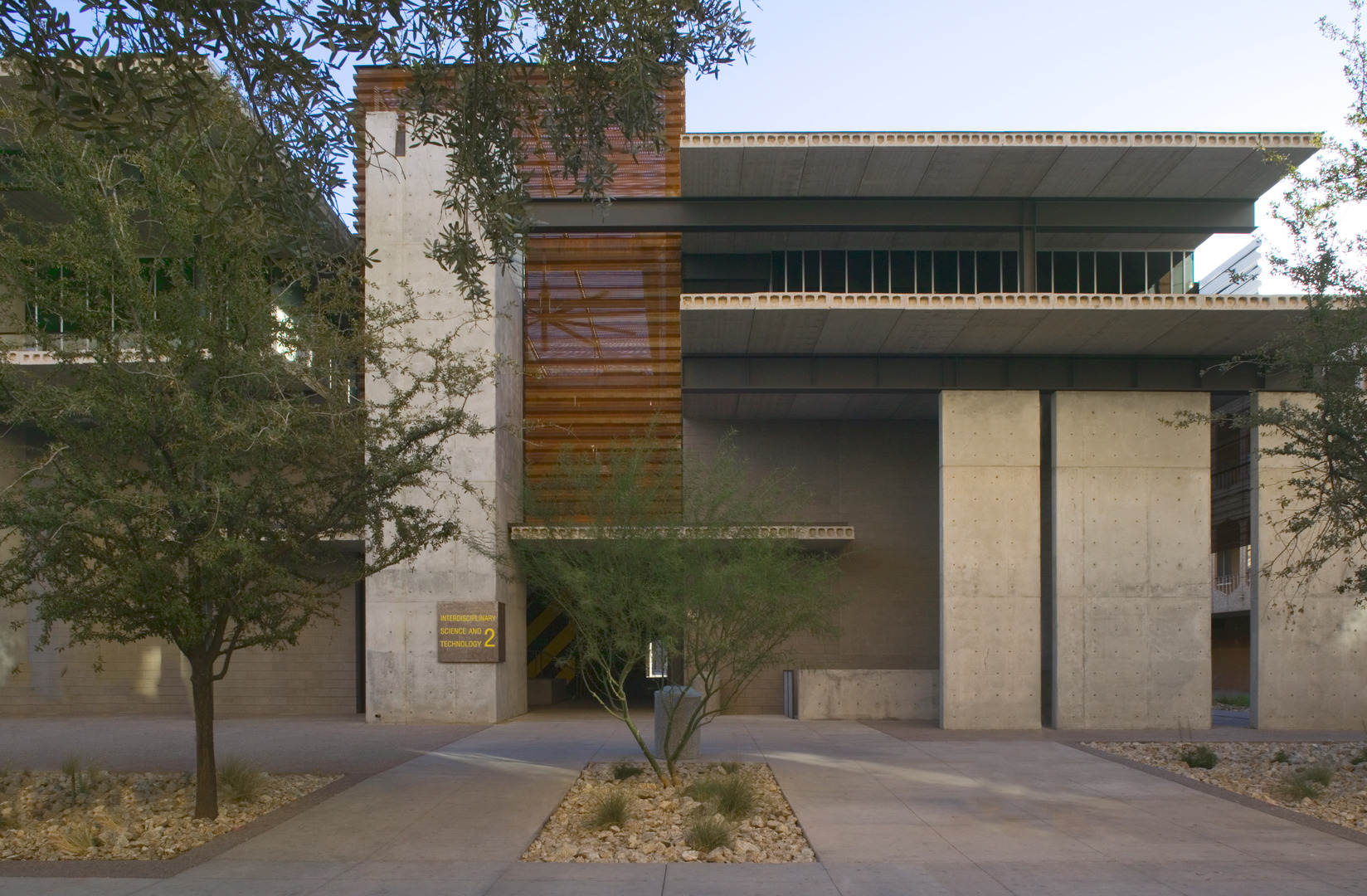
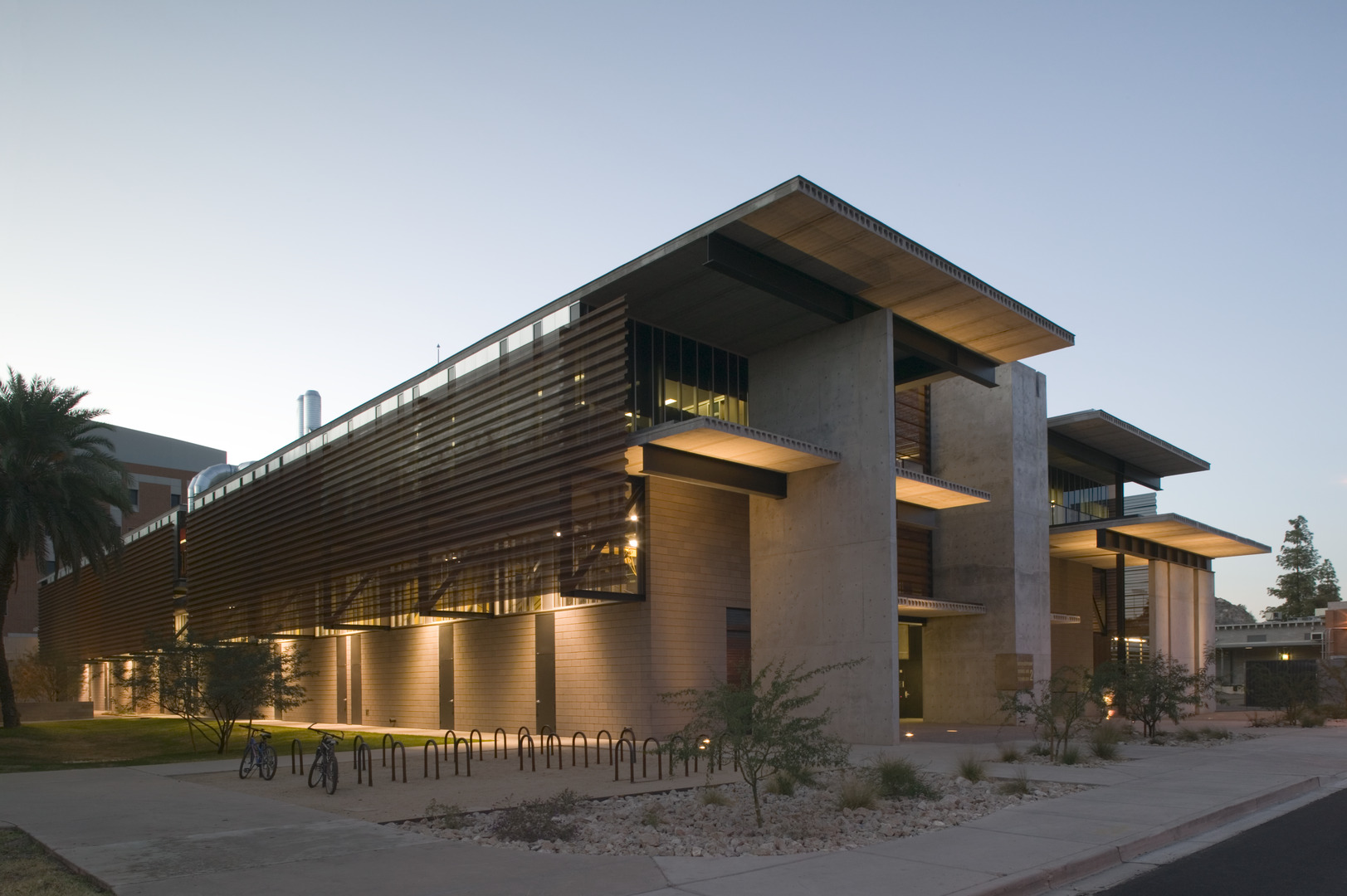
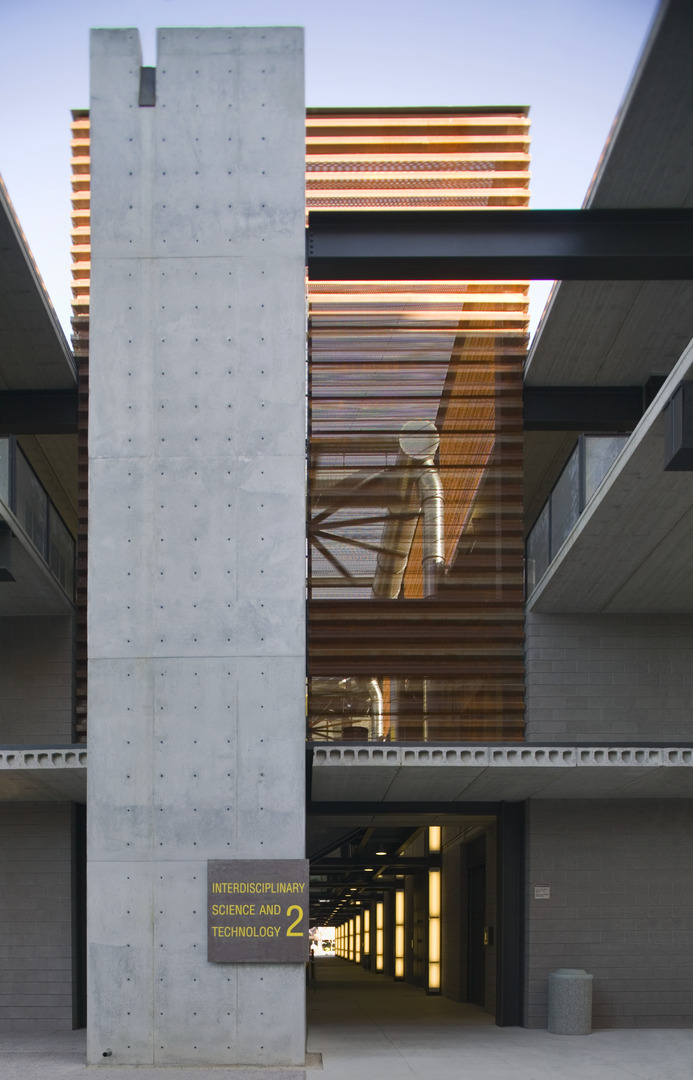
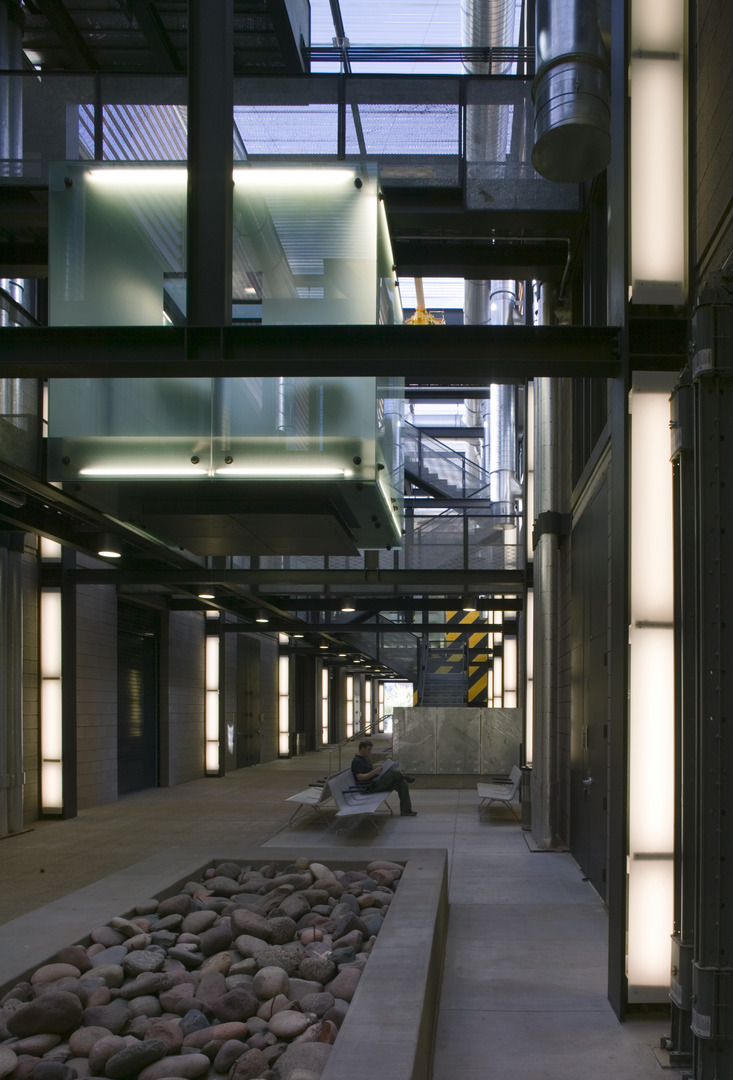
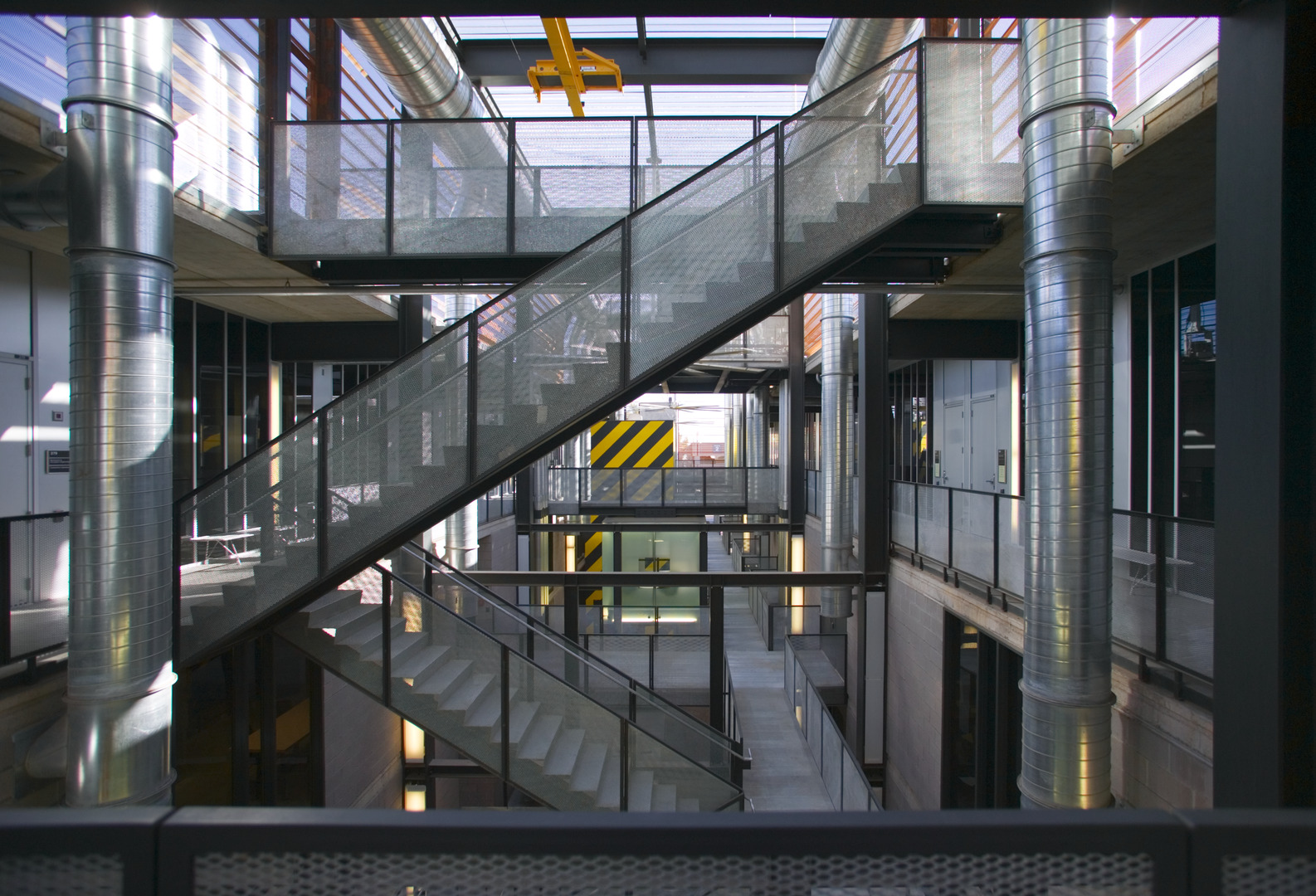
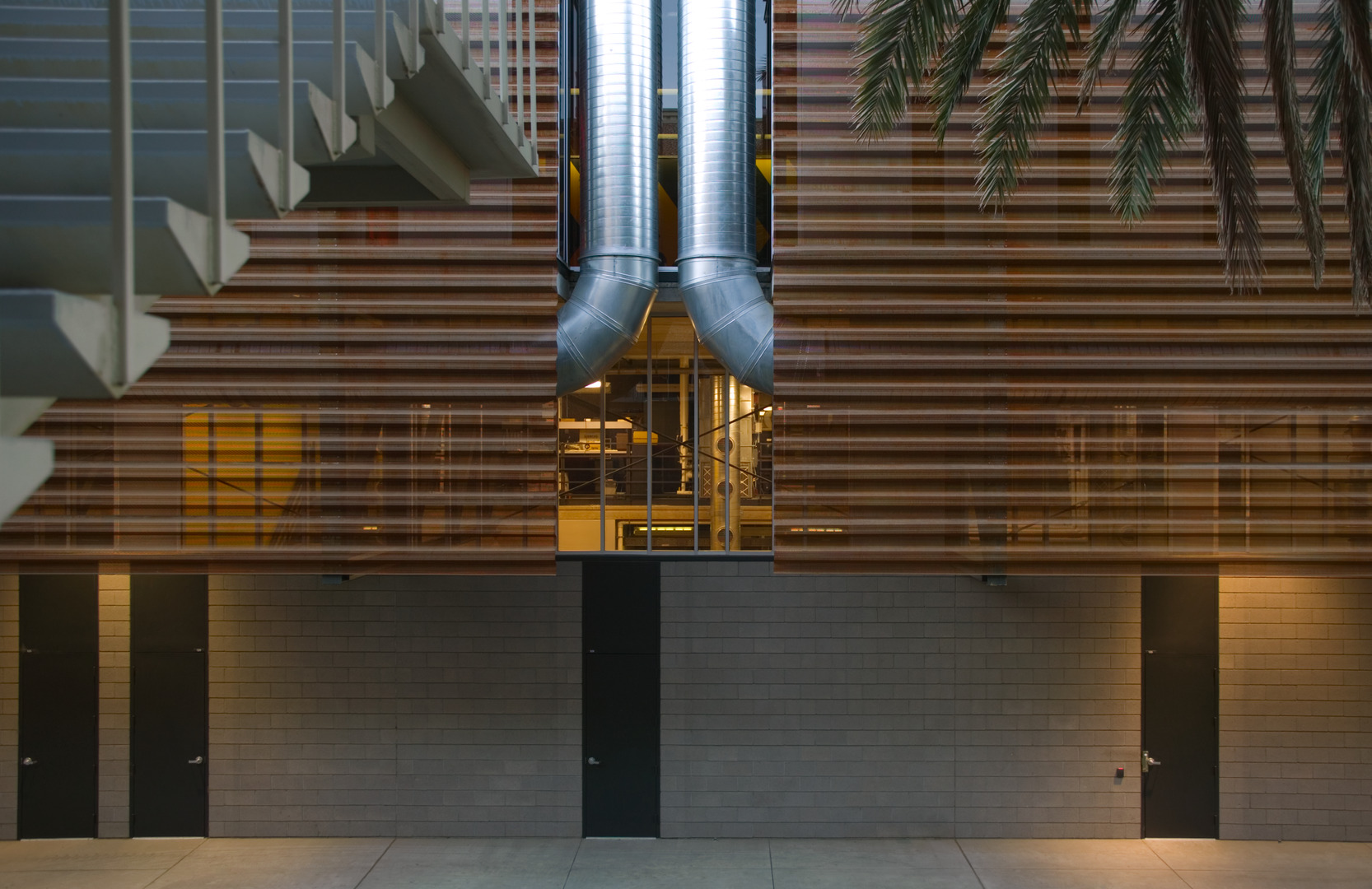
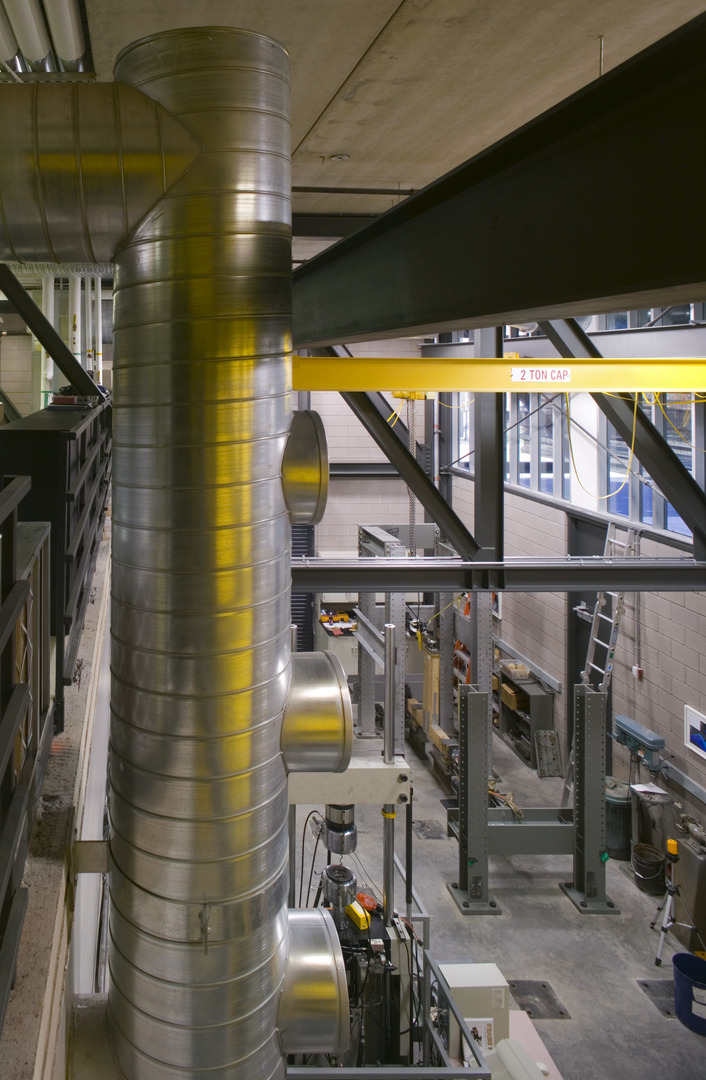
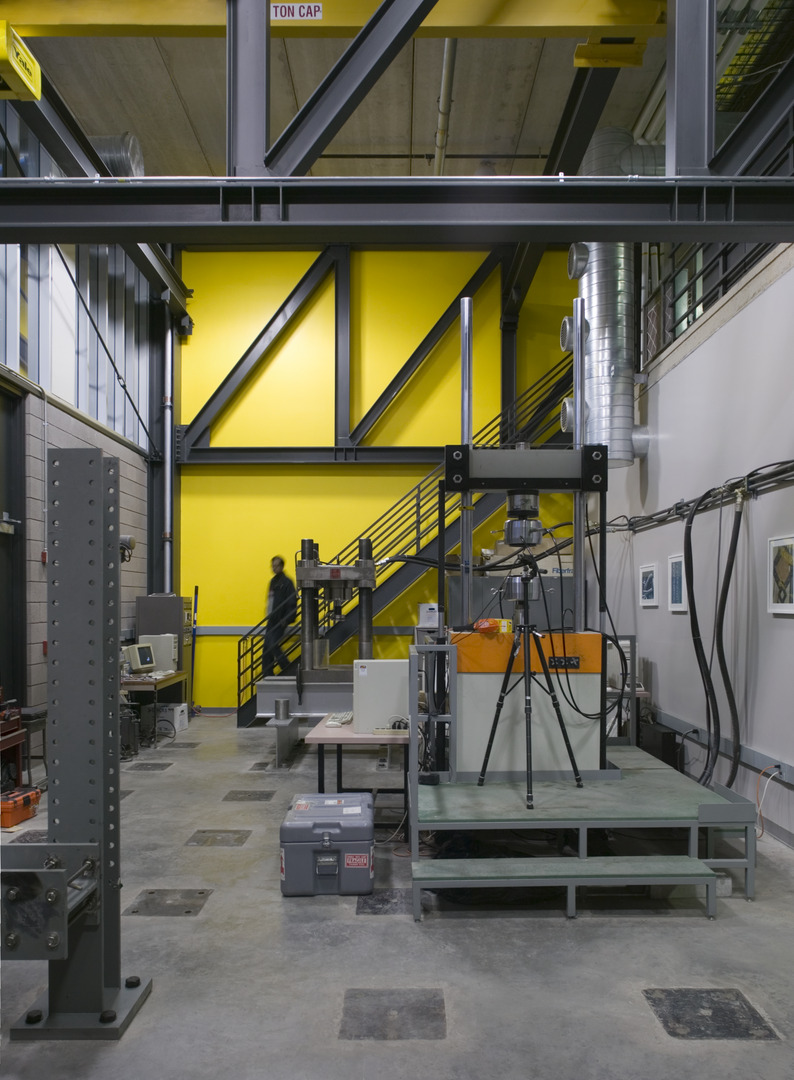
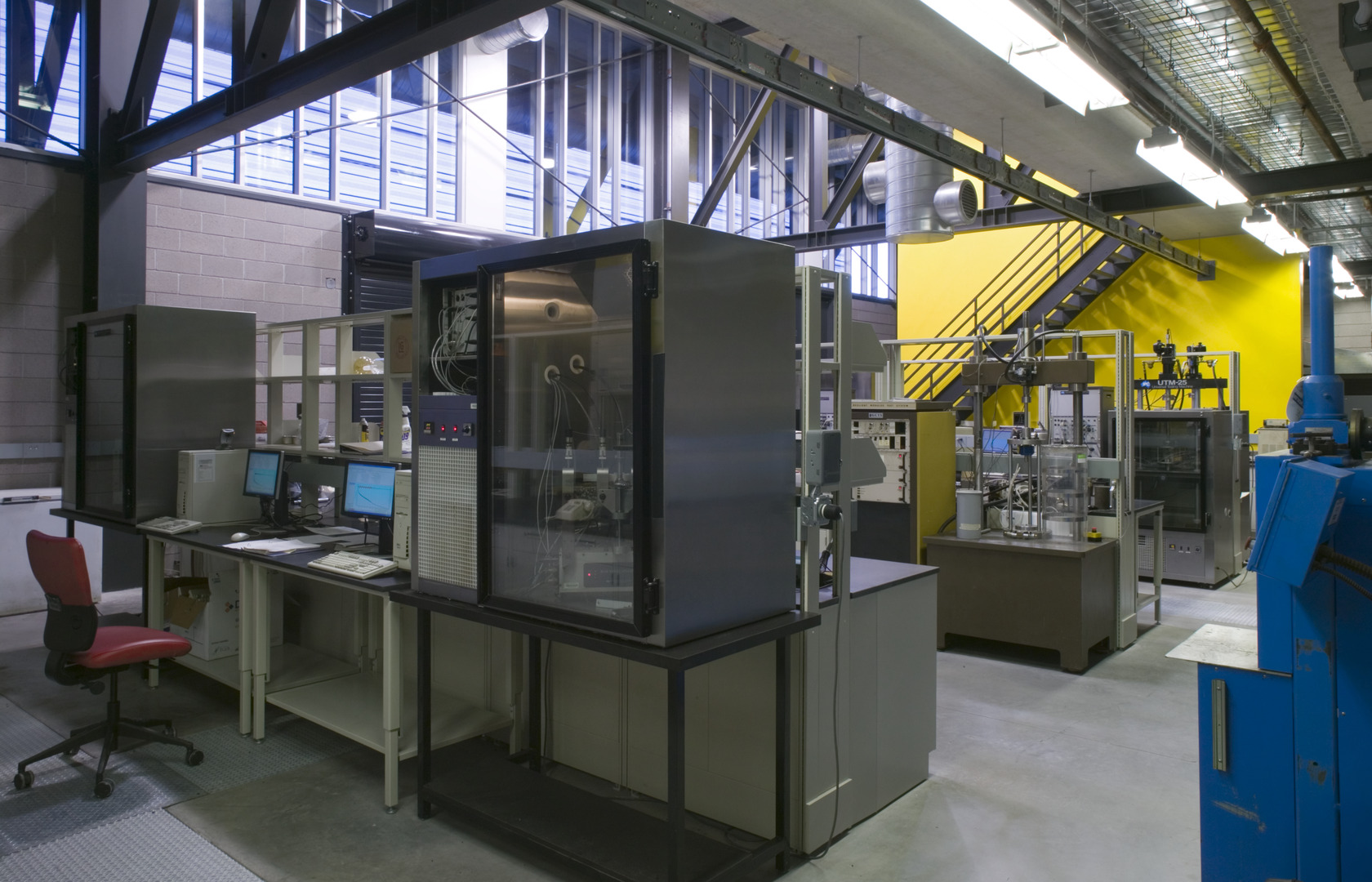
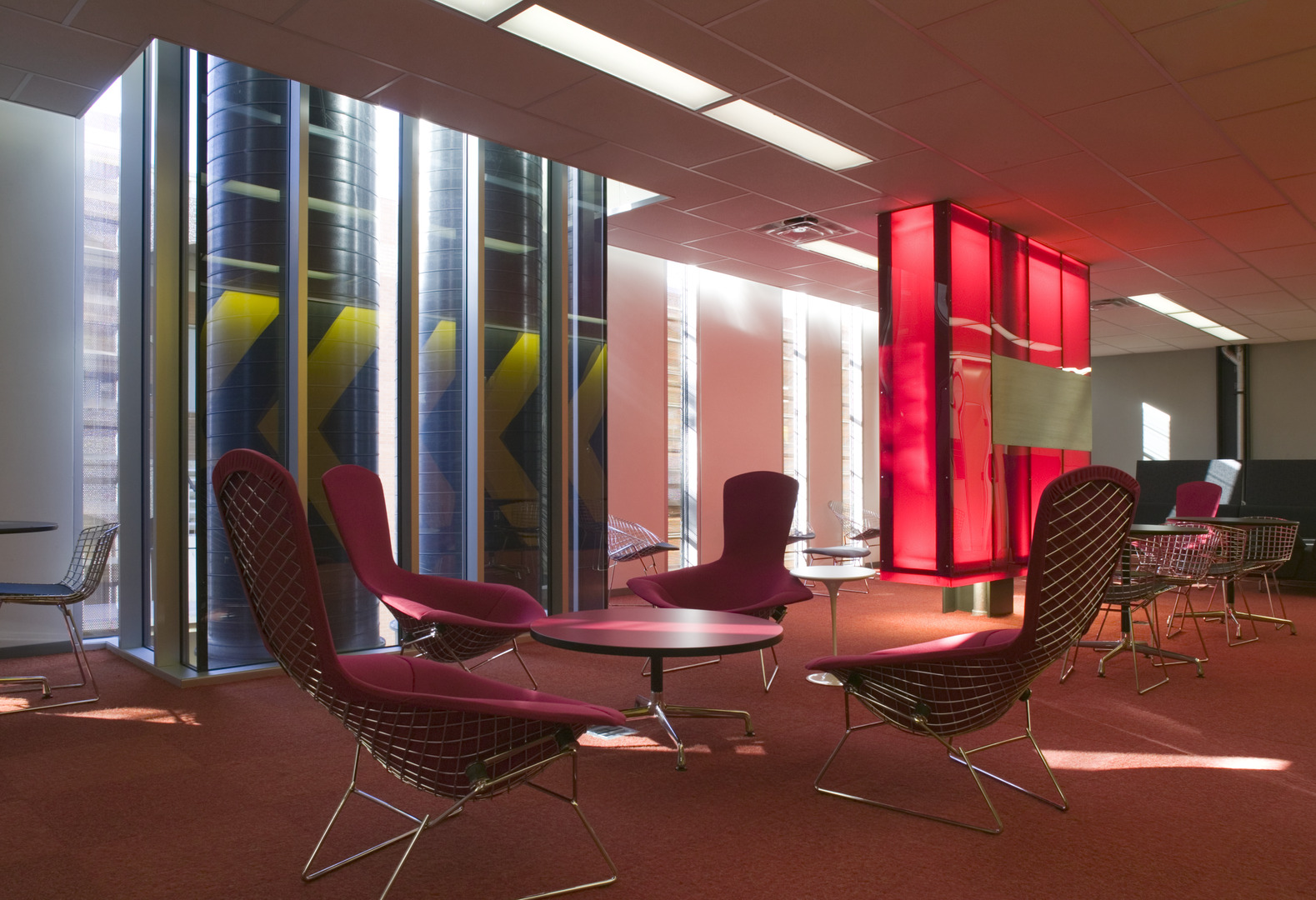
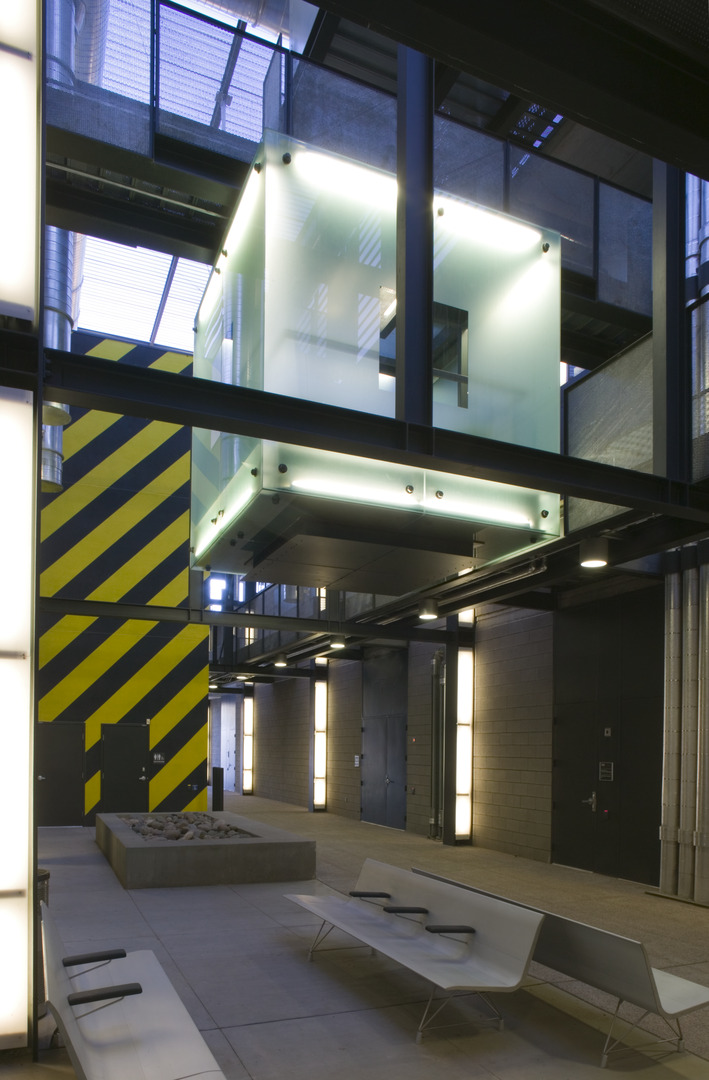
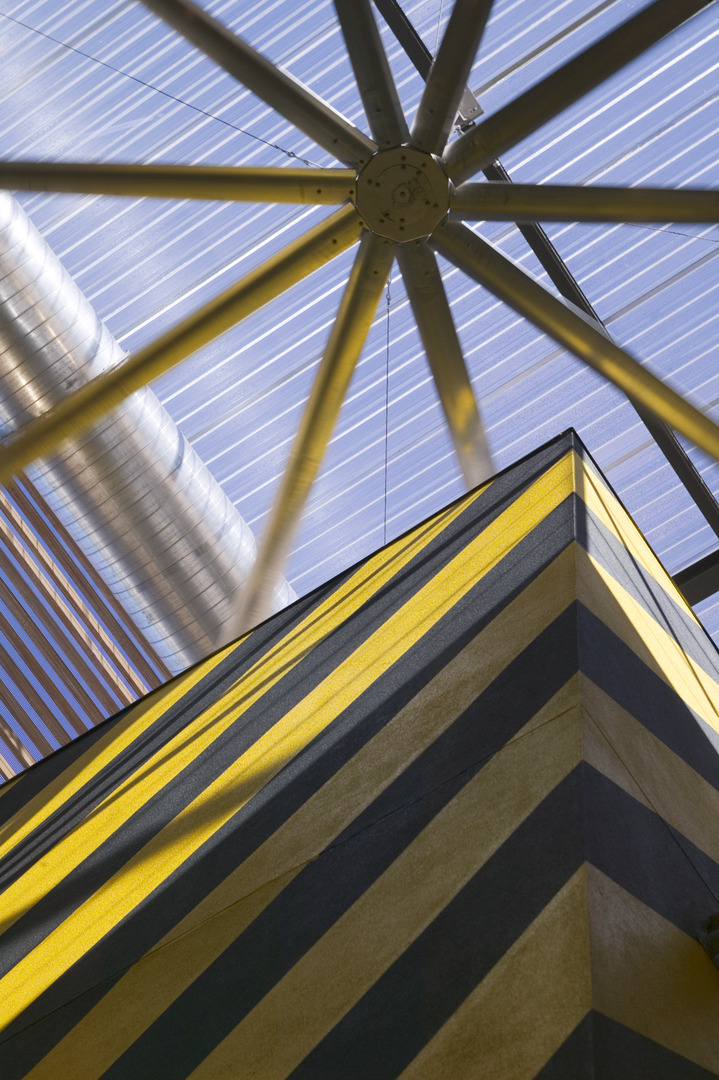
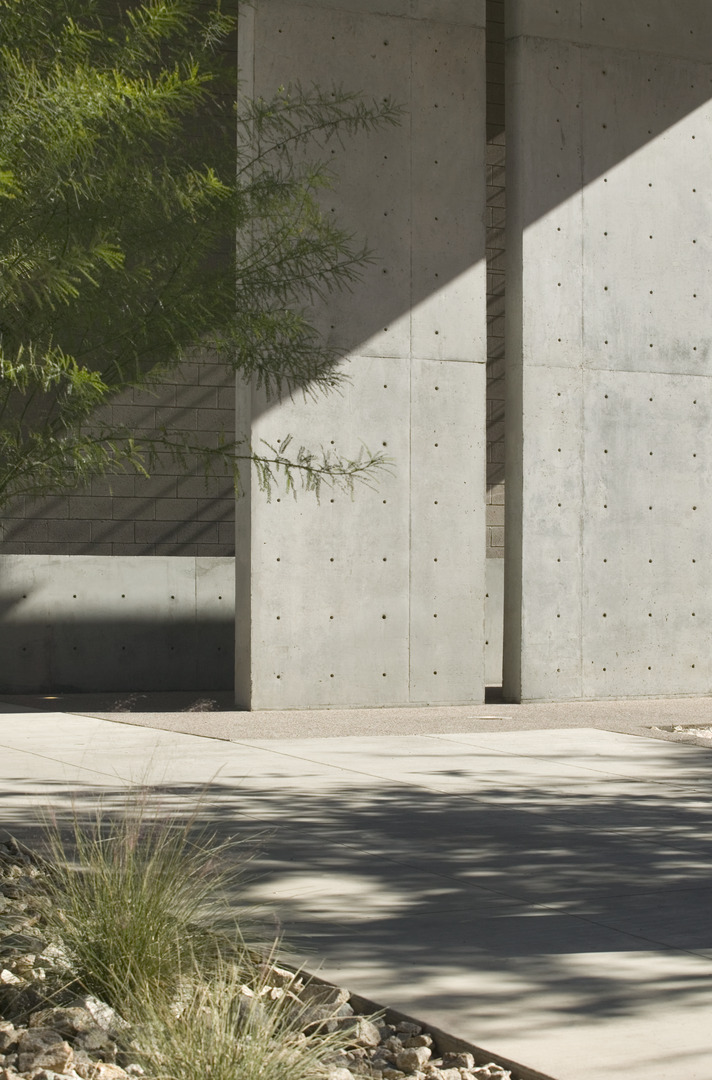
An Adaptable Architectural Chassis for Research
As the typical building cross section demonstrates, established goals of economy, expediency, agility, sustainability, and flexibility for a dynamic program, shaped the design solution for the Interdisciplinary Science and Technology Building 2 (ISTB2) as a flexible, modular, spatial and systems framework to support a variety of high-bay and ballroom type specialty engineering labs. The buildings capabilities revolve around quickly adapting to changing tenants and research requirements. The building tectonics and systems, designed to address constructability, infrastructure needs, and functional requirements such as vibration control, are exposed to demonstrate their function and to be easily accessible for reconfiguration. The deliberate organization, detailing, and materiality all combine to create a unique character for the facility reflective of its purpose. The elemental structural system, comprised of repetitive trussed steel bents spanned by precast hollow core planks and infilled with unit masonry, provided a cost-effective approach that sourced materials and fabrication locally to meet the project budget, fast-track schedule, and sustainability goals.
The program gathered a diverse mix of research driven engineering labs including Pavement, Soils, Fluid Dynamics, Thermodynamics, Combustion, Geology, Hydraulics and Structures Testing including a wide variety of specialized equipment associated with their individual research pursuits. The tenant mix fluctuated throughout the design of the project and was anticipated to evolve over time emphasizing the need for adaptable architecture and building systems. Within the architectural framework a flexible modular utility infrastructure is distributed through an orchestrated network of floor trenches, overhead chases, and vertical pathways, allowing for expedited initial fit-up of lab spaces, and future overturn when needed. Unassigned shell space with was also provided for expansion of current programs and a resource to attract new research to the campus.
Influenced by the elongated, urban site, the labs are organized as two linear bars flanking a partially enclosed exterior, axial courtyard. To maximize the quality and utility of the lab spaces themselves, ancillary lab spaces are located in partial basement and mezzanine levels. Circulation and service cores are externalized to the shaded central courtyard reducing conditioned interior space. The court intentionally creates a unique experience for the building occupants and those passing through as a multi-level common space with a “science on display” narrative, one of the first science buildings on the ASU main campus to implement this approach.
The building is a tectonic expression of its systems and programs, reflecting its purpose as an engineering research facility. Primary building systems and distribution of common building services are all exposed and in a tangible and experiential way within the centralized courtyard and common space giving the occupants the sense that they are “living in the machine” that supports the research.
Design Architect: Richärd Kennedy Architects
Architect of Record: Richärd Kennedy Architects
Client: Arizona State University
Size: 60,000 SF
Project Type: Science + Technology, Higher Education
Services: Architecture, Programming, Planning, Sustainability, Interior Design
Delivery Method: CMAR
General Contractor: Westpac Construction
MEP Engineer: Energy System Design, Inc.
Structural Engineer: Caruso Turley Scott, Inc.
Civil Engineer: KPFF Engineers
Landscape Design Architect: CF Shuler
Photographers: Bill Timmerman
Certification: LEED Silver Certified
2007 – IIDA Southwest Chapter PRIDE Award, Design Excellence for Environmental Design
2006 – Research & Design - Lab of the Year / Lab of the Year High Honors
2006 – AIA / SCUP National Honor Awards, Honor Award
2006 – AIA Western Mountain Region, Honor Award
2006 – AIA Arizona, Merit Award
2005 – Southwest Contractor Best of 05, Best Green Building
The building is a tectonic expression of its systems and programs, reflecting its purpose as an engineering research facility. Primary building systems and distribution of common building services are all exposed and in a tangible and experiential way within the centralized courtyard and common space giving the occupants the sense that they are “living in the machine” that supports the research.
